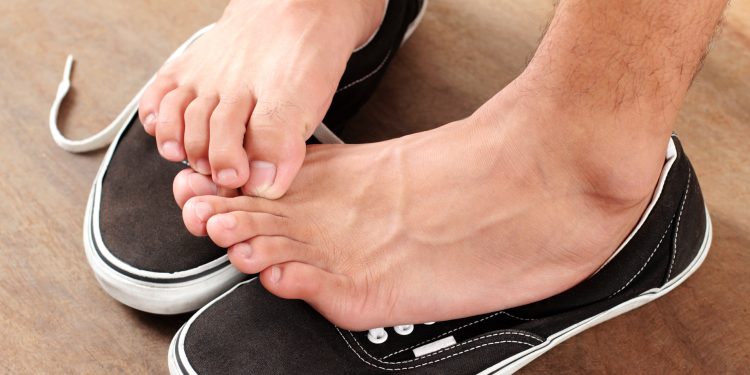DUBOIS – No other part of our body takes as much of a pounding each day as our feet.
In fact, the stress of carrying our bodies puts our feet at a higher risk of injury that any other body part, so it is no wonder that so many people suffer from issues with their feet.
When foot problems arise, it can impact our ability to walk, exercise and perform daily activities, and it makes simple day-to-day life painful and uncomfortable.
Below are three of the most common foot issues and the steps you can take to treat them.
Athlete’s foot
Athlete’s foot is an infection of the skin caused by fungi. The fungi that cause athlete’s foot is commonly found in damp, humid environments, such as showers and locker rooms.
It is also contagious and can spread through contaminated towels, flooring and clothing, as well as human-to-human contact.
Symptoms of athlete’s foot often includes a red and scaly rash, particularly in the space between the toes. Other symptoms include itching, burning, peeling and a slight odor.
Fortunately, athlete’s foot can usually be treated with over-the-counter antifungal creams or sprays. If those remedies do not work, or if you have diabetes or suspect an infection, talk to your doctor about prescription-strength medicine.
Prevention is the best medicine, however, and you can help prevent athlete’s foot by keeping your toenails short and clean, wearing sandals in public showers and locker rooms, changing socks regularly (especially if your feet get sweaty) and letting shoes dry out after each use.
Hammertoes
A hammertoe is a joint on the toe that points up instead of lying flat. Hammertoes occur when the muscles in the foot and leg become weak, which causes the tendons that connect the toes to pull upwards and the middle joint of the toe to buckle. They are most often seen in the middle three toes.
“Hammertoes usually become worse as time goes by,” said Courtney Johnson-McKissick, DPM, AACFAS, a podiatrist with Penn Highlands Podiatry and The Wound Clinic in Clearfield, Penna.
“In the initial stages, hammertoes are flexible and can still be moved at the joint. Eventually, they worsen and become rigid because the tendons and the surrounding soft tissues have tightened.”
Hammertoes can be caused by ill-fitting shoes, such as high heels or shoes that are too tight; arthritis; alcoholism; high arches; bunions; and feet that rotate inward when you walk.
Treatment options may include custom shoe inserts or orthotic devices, anti-inflammatory drugs and cortisone shots. If the pain is severe, or if the hammertoe interrupts daily activities and non-surgical treatments haven’t helped, your doctor may recommend surgery to correct it.
Plantar fasciitis
Plantar fasciitis is one of the most common causes of heel pain.
It occurs when the plantar fascia, the tissue that is used during walking and other foot movements, becomes inflamed. Plantar fasciitis can be caused by an increase in activity level, being overweight, and your type of shoes or the surface you are standing, walking or running on.
“Pain from plantar fasciitis is usually felt near the heel, and it can be come on suddenly as a sharp stabbing pain,” said Dr. Johnson-McKissick. “It also tends to be worse first thing in the morning or after periods of inactivity.”
The treatment for plantar fasciitis may include physical therapy, night splints or orthotics. If conservative measures are not working, your doctor may recommend steroid injections, extracorporeal shock wave therapy, ultrasonic tissue repair or surgery.
Penn Highlands Healthcare offers comprehensive podiatry care for a wide variety of foot and ankle conditions, including athlete’s foot, fungal infections, hammertoes, pain, injuries, neuromas, nail problems, plantar fasciitis and more.
To learn more, visit www.phhealthcare.org.



